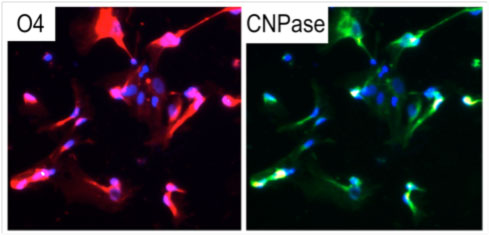Direct conversion to OPCs

Because of the stress of induced pluripotency, the new field of direct conversion is enjoying tremendous focus in current times. Direct conversion has been achieved by either ectopic expression of cell-specific transcription factors or by partial reprogramming followed by an extracellular "nudge" towards the desired cell type in the form of growth factor s and cytokines.
A potential protocol for the direct conversion of adult human fibroblasts to OPCs has been developed. This relies on partial reprogramming by mRNA-mediated expression of the Yamanaka Factors, followed by OPC-inductive signaling by FGF2, FGF4, and PDGF.
| Cell type | Advantages | Disadvantages |
|---|---|---|
| Embryonic stem cells | a. Easy to obtain and maintain in culture b. Very amenable to differentiation c. Different ES lines are more homogenous in their behavior compared to iPS lines d. Unlimited proliferative capacity, hence potentially large numbers of desired cells can be generated |
a. Ethical concerns because the method of ES cell removal is considered embryo destruction b. Scientists are wary of using ES cells because of regulatory roadblocks and lack of funding. c. Represent allogenic transplants requiring long term immune suppression |
| Induced pluripotent stem cells | a. Can be generated in a patient-specific manner b. No ethical concerns about iPS cell generation c. Diseased iPS are very useful for disease modeling, studying disease progression and drug screening |
a. Time required for generation and differentiation to a specific cell type is too long for treating acute conditions b. Possess increased mutational load and are more tumorigenic than ES cell derivatives c. Immune response to host-specific iPS cells have been observed d. Retain epigenetic memory of tissue of origin and are refractory towards differentiation to a different lineage |
| Directly converted cells | a. No ethical concerns b. Less genomic reprogramming is involved, hence potentially less mutational load c. Therapeutic cells can be generated patient-specifically in as short as three weeks |
a. Requires fairly complete knowledge of the regulatory mechanisms of differentiation to a cell type b. Has been shown to work for a very limited number of cell types |